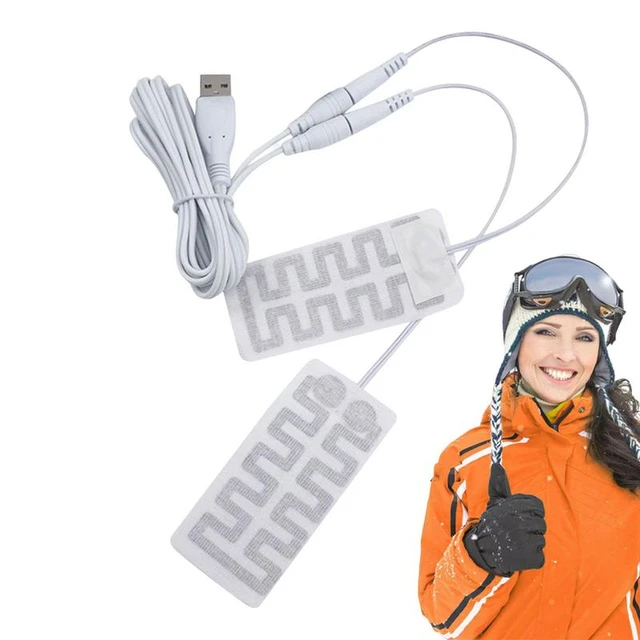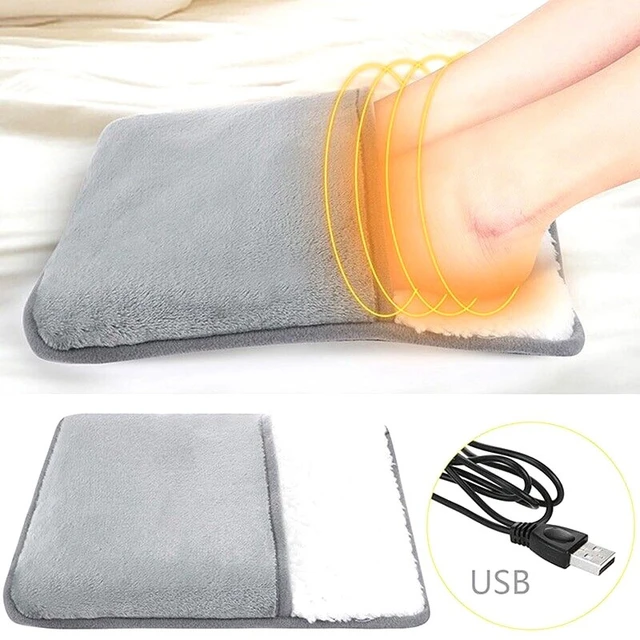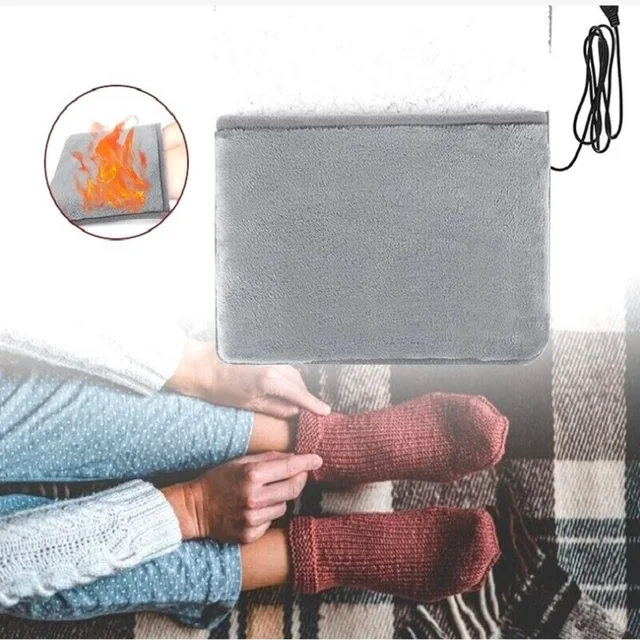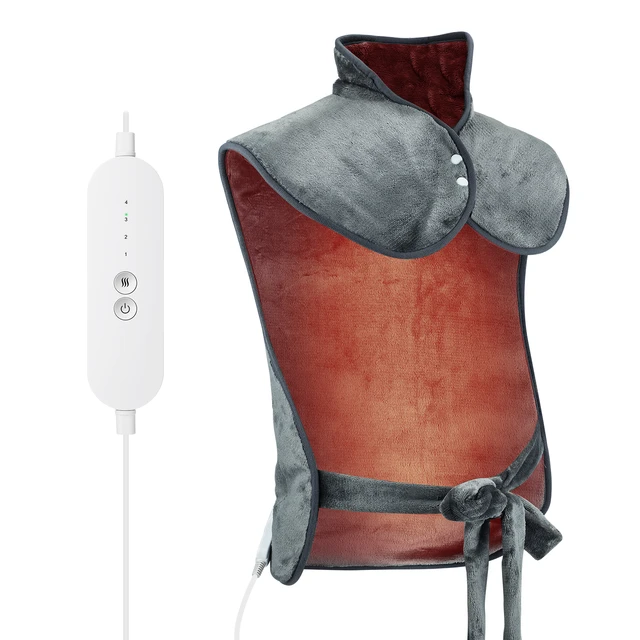Introduction
Rice heating pads are commonly known for their ability to provide soothing warmth and relaxation. However, they can also be used for cold therapy when chilled. These versatile tools offer the benefits of both hot and cold therapy, making them a practical and cost-effective option for managing various conditions and injuries. In this guide, we will explore the dual functionality of rice heating pads, explaining their applications for both hot and cold therapy. By understanding the benefits, considerations, and proper usage of rice heating pads for hot and cold therapy, you can effectively utilize them to address a range of needs.

Can a rice heating pad be used for both hot and cold therapy?
Hot Therapy with Rice Heating Pads
1.1. Soothing Heat for Relaxation
Rice heating pads are primarily used for hot therapy, offering soothing warmth to relax muscles and promote relaxation. Heating the pad helps increase blood flow, reduce muscle tension, and relieve pain and discomfort. Hot therapy is commonly employed to manage conditions such as muscle aches, menstrual cramps, arthritis pain, and stress-related tension.
1.2. Easy Heat Retention
Rice grains have the ability to retain heat for an extended period, making them an ideal filler for heating pads. When heated, rice grains accumulate warmth and release it gradually, providing longer-lasting heat therapy compared to other fillers. This characteristic allows rice heating pads to deliver consistent and comfortable warmth during hot therapy sessions.
1.3. Preparing for Hot Therapy
To use a rice heating pad for hot therapy, heat it in the microwave for the recommended duration specified by the manufacturer. Start with shorter heating intervals and gradually increase the time to achieve the desired warmth. Always follow the instructions provided with your specific rice heating pad to ensure safe and effective hot therapy.

Cold Therapy with Rice Heating Pads
2.1. Benefits of Cold Therapy
Cold therapy, also known as cryotherapy, involves applying cold temperatures to the body to reduce inflammation, swelling, and pain. It is commonly used to manage acute injuries, such as sprains, strains, bruises, and swelling. Cold therapy can help numb the area, constrict blood vessels, and minimize tissue damage.
2.2. Chilling a Rice Heating Pad
Rice heating pads can be used for cold therapy by chilling them in the refrigerator or freezer. Place the pad in a sealed plastic bag before chilling to protect it from moisture and potential odors. Ensure that the rice heating pad is completely dry before placing it in the refrigerator or freezer to prevent ice crystals from forming on the fabric.
2.3. Versatility and Comfort
Utilizing a chilled rice heating pad for cold therapy offers flexibility and comfort. The pad easily molds to the contours of the body, providing targeted cold therapy to the affected area. The rice grains within the pad distribute the cold evenly and conform to the body’s shape, maximizing contact and effectiveness.
Considerations for Dual Hot and Cold Therapy Usage
3.1. Temperature Sensitivity
Individuals have varying temperature sensitivities, and what may be soothing warmth for one person could be too hot for another. It is important to test the temperature of the rice heating pad before applying it to the body to ensure it is comfortable and not excessively hot. When using the pad for cold therapy, be mindful of potential discomfort caused by extreme cold temperatures and adjust accordingly.

3.2. Time Limitations
Both hot and cold therapy should be used for appropriate durations to avoid potential risks or adverse effects. Follow the recommended time limits for hot and cold therapy sessions specified by the manufacturer. Overextending the duration of therapy may result in skin irritation, burns, or tissue damage.
3.3. Safety Precautions
When using rice heating pads for hot therapy, always ensure that the pad is heated according to the manufacturer’s instructions to avoid overheating. Additionally, when using the pad for cold therapy, never apply it directly to the skin. Instead, wrap it in a thin cloth or towel to provide a barrier between the cold pad and the skin, preventing frostbite or skin damage.
Benefits of Using Rice Heating Pads for Both Hot and Cold Therapy
4.1. Cost-Effective Solution
Rice heating pads offer a cost-effective solution for both hot and cold therapy. They can be made at home using common materials, such as rice and fabric, or purchased at an affordable price. The versatility of rice heating pads eliminates the need for separate hot and cold packs, making them a practical and economical choice.
4.2. Convenient and Portable
Rice heating pads are easy to use, store, and transport, making them convenient for at-home and on-the-go therapy. They can be reheated or chilled as needed, offering immediate relief wherever and whenever it is required. The portable nature of rice heating pads allows for easy application of hot or cold therapy while traveling, at work, or during outdoor activities.
4.3. Natural and Drug-Free
Rice heating pads provide a natural and drug-free approach to hot and cold therapy. They do not require the use of medications, creams, or gels, making them suitable for individuals who prefer non-pharmacological alternatives. Additionally, rice is a natural filler that does not contain chemicals or additives, providing a safe and environmentally friendly option for therapy.

Additional Tips and Considerations
6.1. Personal Sensitivity and Comfort
Everyone has different pain thresholds and temperature sensitivities. It is important to listen to your body and adjust the temperature and duration of hot or cold therapy according to your comfort level. If you feel any discomfort or excessive heat or cold, remove the rice heating pad immediately and allow your body to recover before reapplying.
6.2. Targeted Therapy
Rice heating pads can be molded and shaped to fit specific areas of the body, providing targeted therapy. Whether you are using hot therapy to relax muscles or cold therapy to reduce swelling, adjust the shape and position of the rice heating pad to target the affected area. This allows for a more focused and effective treatment.
6.3. Hygiene and Cleanliness
Maintaining hygiene and cleanliness is important when using rice heating pads. If you are using the pad for both hot and cold therapy, ensure it is clean and dry before switching between the two. Spot clean the fabric regularly, especially if the pad comes into direct contact with the skin. This helps prevent the buildup of dirt, oils, or bacteria.
6.4. Individual Medical Considerations
Consult with a healthcare professional, especially if you have any underlying medical conditions, injuries, or if you are pregnant. They can provide guidance on the appropriate use of hot and cold therapy and any necessary precautions specific to your situation. It is important to ensure that hot or cold therapy does not interfere with any existing treatments or medical advice.
Alternatives to Rice Heating Pads
If rice heating pads are not suitable for your needs or preferences, there are alternative options available for hot and cold therapy:
7.1. Electric Heating Pads: Electric heating pads provide consistent and adjustable heat levels without the need for microwaving. They often come with different heat settings and timers, allowing for personalized temperature control.

Conclusion
Rice heating pads are versatile tools that can be used for both hot and cold therapy. They provide soothing warmth for relaxation and pain relief and can be chilled for reducing inflammation and swelling. Understanding the benefits, considerations, and proper usage of rice heating pads for hot and cold therapy allows you to effectively manage various conditions and injuries. Always follow safety precautions, test the temperature before application, and adhere to recommended time limits for therapy sessions. With their cost-effectiveness, convenience, and natural approach, rice heating pads are valuable companions for addressing a wide range of therapeutic needs.

